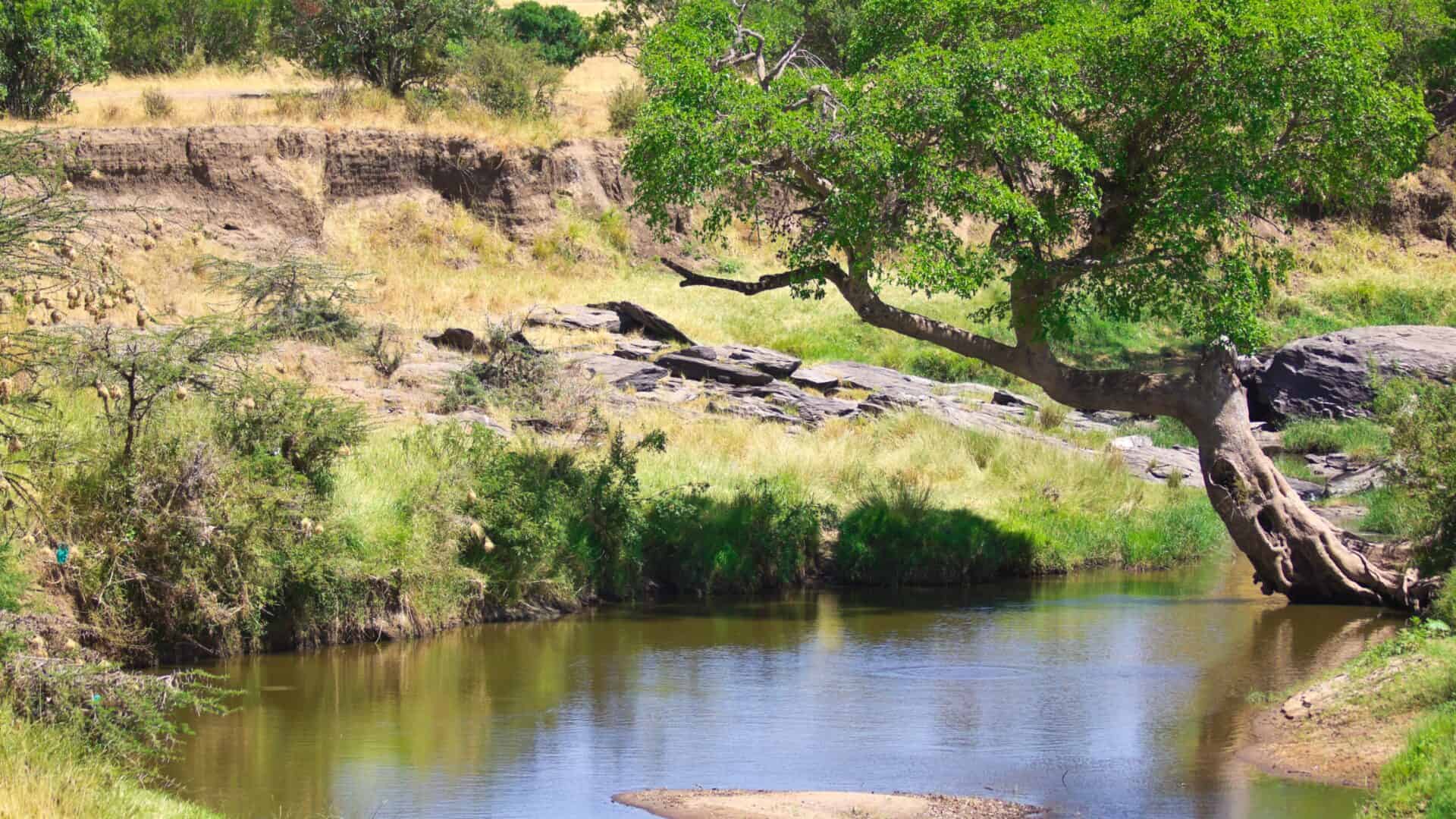The Mara River is a river in Kenya’s Narok County and Tanzania’s Mara Region that runs through the Maasai Mara/Serengeti environment and crosses the wildebeest migration path.
The basin spans 13,504 km2 (5,214 square miles), around 65 per cent in Kenya and 35 per cent in Tanzania.
The river runs for roughly 395km (245 mi) from its origins in the Kenyan highlands to Lake Victoria, where it springs from the Mau Escarpment. The basin may be split into four land use and/or administrative divisions.
The Mara River’s Role In The Great Migration
Nicknamed the ‘River of Death,’ the Mara River played a crucial role in the Great Migration. Each year, countless wildebeest brave its steep banks, plunging into the treacherous waters below. As they navigate this perilous crossing, they must outmanoeuvre lurking crocodiles to reach the other side, making this one of nature’s most dramatic spectacles.
The Mara River is the main barrier for wildebeest herd crossings in the middle of the year, but smaller breakaway groups also cross the Talek and Sand Rivers. As late as November, stragglers have been observed crossing the Talek.
The river is a vital lifeline in the Serengeti-Mara ecosystem and sustains a rich diversity of wildlife year-round. Its banks are lined with lush vegetation, attracting elephants, hippos, and a myriad of bird species. As the river winds through the landscape, it provides essential water sources for both predators and prey, creating a dynamic habitat teeming with life.
Beyond the dramatic crossings, the Mara River offers serene moments of beauty. Early morning mists rise above the water, where hippos wade, and crocodiles bask in the sun. This tranquil scene is punctuated by the calls of various bird species, creating an immersive safari experience that captivates visitors and highlights the area’s incredible biodiversity.
























